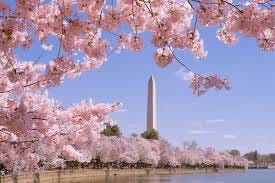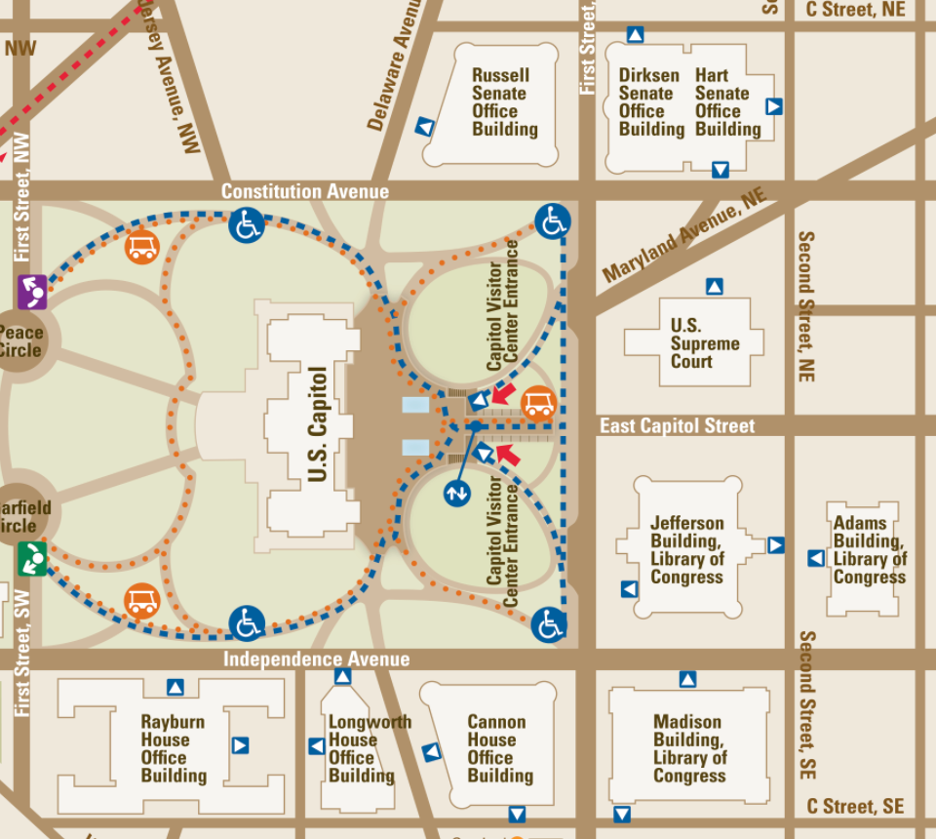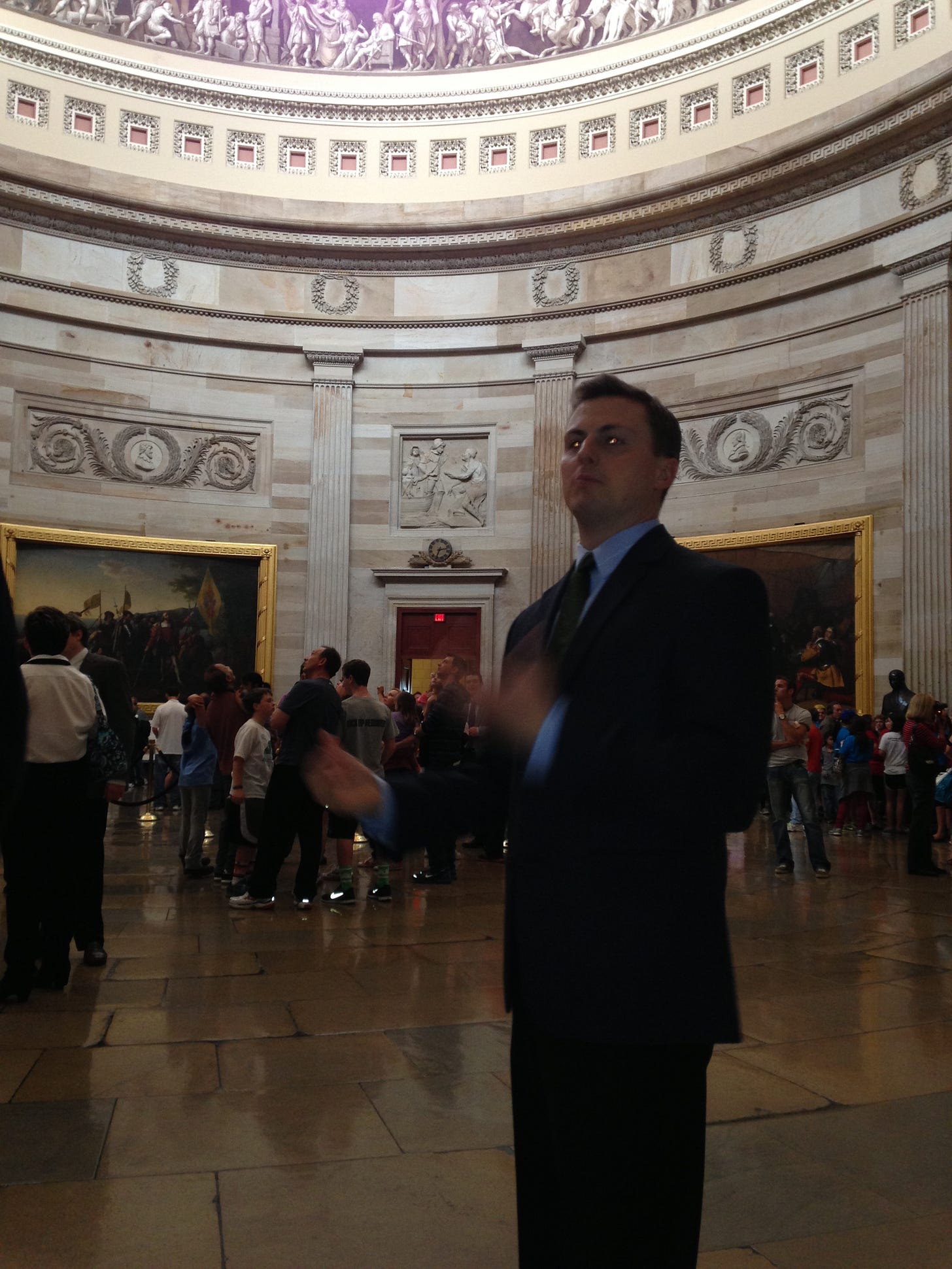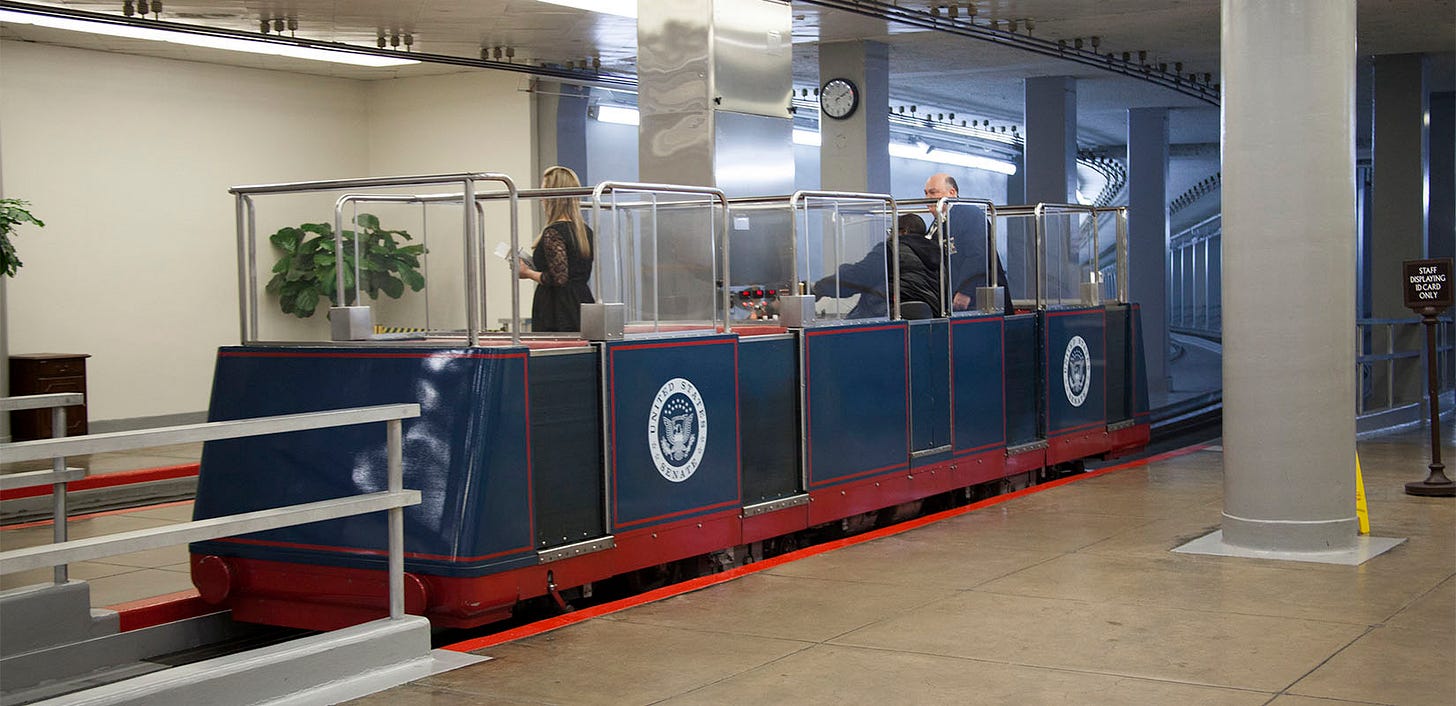Memories, Shaken
After working on the Hill for seven years, Wednesday's attack hit close to home
“You look like hell. Rough night?”
This was not a question I wanted to hear from my boss, but dollar beers at the Pour House were not to blame. My boss knew this and was joking, with a pitying look on her face.
After living in Washington, DC for three years, I developed intense seasonal allergies to the point that, for a few weeks each year, my eyes almost swelled shut. This was pre-COVID-19, so my affliction – runny nose, watery eyes, sniveling, sneezing – did not inspire any fear.
Each Spring, family and friends would message me requesting pictures of cherry blossoms, the National Mall in bloom. My focus, instead, was on stocking up Kleenex with Aloe and a range of OTC allergy medications that never worked.
In my third year of allergy hell, I finally saw an allergist who tested me by pricking my arm with dozens of allergens – Chinese Water torture mixed with acupuncture on my non-dominant wrist. Confirmed, I had seasonal allergies!
The cure was regular allergy shots. This would be a slow process, over years. They would start weekly, then move to biweekly and phase out over time.
For those who haven’t had the pleasure of weekly hypodermic shots in both triceps, allergy shots are a pretty common occurrence. You never get used to them, they still feel like shots, but two pricks each week quickly became routine.
To monitor potential negative reactions, you have to sit in the office for 20-30 minutes and confirm you are fine. Many allergists’ offices are filled with people reading the news on their phones, waiting for their hourglass to complete.
My new doctor worked in a convenient location, between my office on the Hill and my apartment near the up-and-coming H street area, just northeast of Union Station. But I was starting to stress about making the time for these visits amidst a hectic work schedule.
“Of course, we can set up these shots at your work if they have the proper facilities,” she said like an afterthought. “Where do you work?”
“The Hill.”
“Oh, that’s no problem. You can get your shots there.”
“In Rayburn?” I asked, referring to my office building. I remembered there were Attending Physicians offices in each of the Capitol Hill office buildings.
“No. In the Capitol.”
---
I worked on Capitol Hill for just under seven years, from July, 2006 through June, 2013. I started at the end of the Bush era, through the Obama wave and then the Republican resurgence. All, pointedly, in the post 9/11 world.
Despite politics’ feverish coverage in news and entertainment, the day to day life of those who work on the Hill is often glossed over.
I worked for one Congressman during that time in the Rayburn House Office Building. Typically regarded as the nicest of the three buildings on the “House side,” it was built most recently and had slightly larger office layouts compared to the others.
All of the buildings on the Capitol Complex were large, ornate marble structures that conveyed a sense of history and seriousness. Entering into those wide, breezy halls – always, always, always after passing through security with metal detectors and several armed Capitol Police, even if the entrance was for Staff only – with the clacks of dress shoes on marble echoing and murmurs of visiting school groups, you couldn’t help but feel a sense of wonderment working there.
The entire complex is a fitting complement to the White House less than two miles away and a stark contrast to the hideous, Brutalist federal buildings that run along much of the National Mall.
You would regularly pass Members (of Congress – the preferred shorthand) in those halls and quickly see that once the curtain was pulled back, many of them were small people pretending to be wizards. But there was no doubt that this shining “emerald city” was real and befitting its role as the capital of an exceptional nation.
I would visit the Capitol building a handful of times each week: a weekly Whip briefing of upcoming legislation to be considered on the floor, a strategy lunch for my boss and his fellow moderate Members, occasional help for a large tour, as each Member organized their constituents’ visits. During floor debates, I would sometimes need to run amendments to file or talking points over to my boss, who would meet me at the door to the Members-only “Cloakroom” just off of the House floor.
Media reports mention the tunnels underneath the Capitol complex as if it is some mysterious labyrinth, filled with hideaways, secret passages, and probably Nicholas Cage running one of his capers. In reality, they are much less exciting: on the Senate side, the three office buildings are connected by an underground tunnel that then runs to the Capitol, with a Disney World cast-off tram speeding up the trip. That tram is a novelty the first time you ride in it, but like anything, it becomes routine and mundane.
On the House side, there is a similar tram between Rayburn and the Capitol, as well as a tunnel connecting the three office buildings and another walking tunnel between the corner of the Cannon and Longworth buildings, adorned with each district’s winning High School Art contest painting.
There were lots of meeting rooms in the basement of the Capitol, which unlike the majestic galleries and halls above, felt more like the bowels of a submarine or the painted over brick of elementary schools build in the early part of last century.
Most Members with Rayburn offices would use that tunnel to run back and forth to the Capitol, but it was not uncommon to see Members with Cannon and Longworth offices out and about as they crossed Independence Avenue and rushed up the Capitol Steps when votes were called.
That entrance is for Members only.
During my last two years in DC, I worked just past the “Senate side,” so my daily commute was a 20-minute walk around the Supreme Court and in front of the Capitol before getting to Rayburn. There were always tourists around, so the complex felt open and accessible, while heavily guarded with Capitol Police and other security omnipresent.
It felt like an open-air castle. The buildings were so close you could touch them, but the intense gaze of the armored men holding M4s reminded you that you probably shouldn’t. Security was even more intense during events like the State of the Union and speeches by foreign heads of state, with the rusty green of national guard trucks blurring the white marble horizon. The planning for such security escalations was routine.
We had evacuation and shelter-in-place drills regularly, where we would check our stock of “escape hoods” (respirator-gas mask hoods) and emergency communications equipment, reminded of the elaborate sirens and announcement systems throughout the buildings. (These systems infamously failed during the 2011 Earthquake.)
I was routinely asked if I felt nervous working on the Hill, considering it may have been Flight 93’s target on 9/11. With no false modesty, I always said of course not. This is a fortress.
This is one of the safest places I could be.
---
I am still coming to terms with what happened at the Capitol on Wednesday. Many of the ideas I want to write about further – misinformation, cognitive dissonance, the role of the media in our lives, a fundamental misunderstanding of our government – somehow coalesced into a powder keg that exploded and cost five lives. As someone who spent a lot of time in and around the Capitol, I am stunned that more lives were not lost. Or worse. Much worse.
For years, I would walk into the Capitol each Friday after lunch through the staff-only security entrance on the south side, pass through the Rotunda and head into a Staff-only hallway. There I went into the Attending Physician’s office where I and a handful of others would receive two shots, then sit and read the Hill papers for 20 minutes. The Capitol is a landmark, but it is also a place filled with people doing their work, living their lives. I was one of them.
I will have a lot more to say about what just occurred and all of these simmering issues that seem ready to bubble over more and more in the coming weeks and months.
But right now, I am still in shock. I am so furious and depressed and distraught I can’t see straight. I have the palpable feeling of having been punched in the stomach, losing my balance and falling into a heap on the floor.
The events of Wednesday shook many illusions I have long held: we as a country are more united than divided; even in political disagreements, there are lines that would never be crossed; the People’s House is accessible both conceptually and physically, while remaining secure enough that the efficacy of our government would never be in doubt.
Turn the page? Move on in the spirit of healing? How can you talk about shoveling snow after what just happened?
I understand that there is a great deal of disdain and dislike directed towards many politicians. Pelosi, McConnell, Schumer and McCarthy aren’t who I would choose to be our national leaders. But that is how democracy works. We have a representative democracy and choose who write our laws. Those people, whom we elected, were attacked and nearly killed by a bunch of internet trolls, LARPing revolutionaries and outright seditionists.
And they did so while desecrating our foremost monument to democracy, the home of our representative government.
We as a nation must respond to what occurred at the Capitol and reckon with its causes. There will be time for that. But for now, I am just angry.










Keep writing Dan, you have a voice worth hearing.